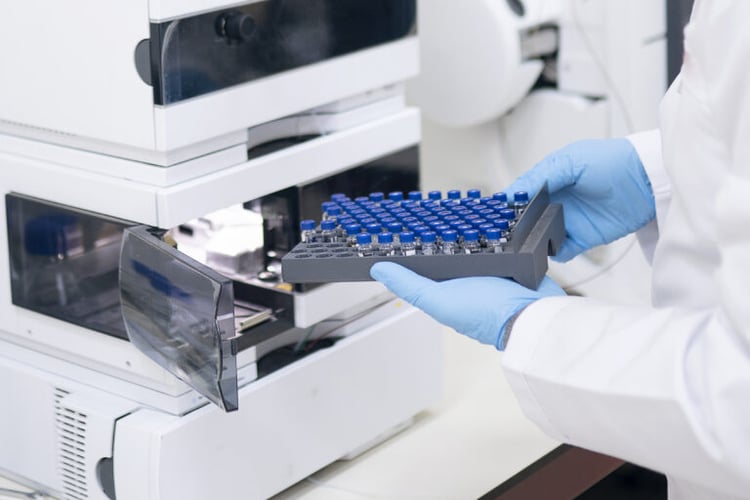The final version of ICH M10 “Bioanalytical Method Validation and Study Sample Analysis” was adopted on May 24, 2022. This is the harmonized guideline which has been ratified by participating regulatory authorities including the US FDA. At the final implementation step (Step 5), this guideline is expected to replace the FDA’s final Guidance for Industry titled “Bioanalytical Method Validation” dated May 2018. As stated in the mission for ICH, these guidelines assist in the development and approval of medicinal products in an optimized resource-efficient manner.
Like the FDA guidance which preceded it, the M10 guideline provides clear recommendations for validation of bioanalytical methods to be used for nonclinical and clinical studies including the application of the method for analysis of study samples. The content of both documents is almost identical with some formatting differences. Both documents are organized in a comparable structure. There are no differences in the method validation acceptance criteria or the study sample analysis criteria. Also, there is no new information in the M10 guideline that is not already covered in the FDA guidance. It should be noted that in the FDA guidance, the relevant information is summarized and presented in easy to follow tables which are included in the appendices to the guidance document.
Using the current version of the M10 guideline as a guide, the following is a summary of the contents of this guideline.
Data from concentration measurements of biological samples in nonclinical and clinical studies is a critical part of the regulatory review and decision-making process and it is necessary to ensure that the bioanalytical methods used are fit for purpose and appropriately validated and documented by following the principles described in this guideline. Any deviations from the guideline should be supported by appropriate scientific justification and consultation with the appropriate regulatory authorities is encouraged. This guideline covers chromatographic methods and ligand binding assays (LBA) and does not cover bioanalytical methods for biomarkers or immunogenicity assessments.
A systematic and robust method development strategy provides a basis for successful validation of the method. It is important to properly characterize elements of the method including reference standard, critical reagents, calibration curve, quality control samples, selectivity and specificity, sensitivity, accuracy, precision, recovery, stability, and minimum required dilution. The matrix should be same as the study samples including any additives such as anticoagulants.
A full validation of the bioanalytical method is expected whether a new method is developed or an existing method from literature is used or when a commercial kit or lab method is repurposed for bioanalytical use. For example, a lab method for determination of blood glucose should be fully validated as per this guideline if it is to be used in a non-clinical or clinical study as the primary analyte to support approval of a medicinal product. A full validation is also expected for each analyte that is to be measured such as parent and metabolite or isomers of the drug.
For chromatographic methods (LC, GC, etc.) a full validation should include the elements of selectivity, specificity, matrix effect, calibration curve (response function), range (lower limit of quantification (LLOQ) to upper limit of quantification (ULOQ)), accuracy, precision, carry-over, dilution integrity, stability and reinjection reproducibility.
For LBAs the elements that should be evaluated include specificity, selectivity, calibration curve (response function), range (LLOQ to ULOQ), accuracy, precision, carry-over, dilution linearity, and stability. If necessary, parallelism can be conducted when appropriate study samples are available.
For both chromatographic methods and LBAs, the guideline provides additional details on each of the above elements for validation of the method. Proper documentation supporting each step and process in the method validation is critical. Criteria for successful validation of the method should be pre-specified in a protocol, SOP or other formal document prior to initiation of the validation process. Similarly, the final results or outcome of the method validation should be documented in the form of a full report which includes raw data, chromatograms, and other pertinent details. While the M10 guideline doesn’t specifically require it, to assure the integrity of the reported data, Quality Assurance (QA) audits should be performed throughout the study by a QA Auditor and the report should include a statement about compliance with appropriate standards such as GLP.
Recommendations for best practices during analysis of samples from an applicable study are provided including the criteria and extent of Incurred Sample Reanalysis. Not completing ISR or incomplete ISR are considered a major deficiency. The criteria for defining the scope, extent, acceptance and reporting of ISR is also detailed in the guideline. Similar to the requirements for documentation for method validation, it is critical to maintain proper documentation for the analysis of study samples. The guideline provides details on the type and format of information to be included in the reports and the reporting requirements for this information in the relevant eCTD modules.
The M10 guideline also discusses considerations for special situations such as analytes that are endogenous substances, parallelism, commercial and diagnostic kits and dried matrix methods.
Bioanalytical method validation of biologic sample concentration measurements in nonclinical and clinical studies is a critical part of any drug or biologic development program. The experts at ProPharma are ready to assist you in developing and executing a comprehensive and compliant strategy starting from initial conceptualization to method development, validation, study implementation, dossier submission and final regulatory authority approval.
Interested in learning more? Contact us today to find out how we can help not only with your eEMA/FDA submissions, but all of your global regulatory needs.
TAGS: Food & Drug Administration (FDA) North America ULOQ ICH M10 Lower Limit of Quantification (LLOQ) electronic Common Technical Document (eCTD) GLP Regulatory Sciences

